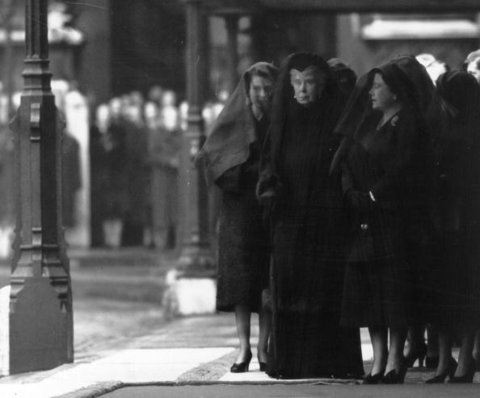
The Keystone Press Agency
Matthew Butson, Vice President of the Hulton Archive at Getty Images, reflects on the history of Keystone Press, for whom Ron Burton was working when he first won the Photographer of the Year award in 1958
Keystone Press, one of the original and most respected of the numerous ‘Fleet Street’ press agencies, rose to prominence soon after the First World War and soon became one of leading press agencies of the era. The founding father of Keystone was Bert Garai, a diminutive but tough Hungarian who escaped Europe for America in 1914 and quickly carved a journalistic career for himself translating captions for the stories sent in by war correspondents. His nose for a good picture story and contacts in Europe (he was one of 13 children and his eldest brother Ferenc Garai, a respected news reporter) helped increase the flow and sale of pictures from the war zones. Garai was made manager when his employers, Press Illustrating Company, merged with Keystone View Company, based in Pennsylvania (known as the Keystone State, hence the Keystone name).
Returning to the UK in 1920 Garai was by now an expert in his field. New magazines were crying out for picture stories and while Garai claimed never to have taken a photograph himself he employed many gifted photographers to supply the ‘News’, ‘Features’ and ‘Exclusives’ of the day. Chris Ware, the first photographer to be employed by Keystone, was responsible for many first rate feature sets and historic pictures and travelled widely with Garai to ‘get the story’.
Another Keystone photographer Ron Case, who captured the world famous ‘Three Queens’ picture, (a version of which is shown above), showing Queen Mary, Princess Elizabeth (now Queen Elizabeth II) and Queen Elizabeth (the Queen Mother) in mourning following the death of George VI.
Amongst many other famous and respected Keystone photographers is Fred Ramage, who started taking pictures in 1917 at the age of 16, and whom Garai made manager of the Keystone View Company. Ramage was known for his initiative in taking pictures and once amazed his rivals by getting a picture of a Derby winner in the papers within 30 minutes of the race. He had many overseas assignments and covered Mussolini during his rise to power in Rome. Ramage was assigned to the American Army during Second World War and was in the front line with them throughout their campaign in France. Keystone Press (together with Keystone Featuers) were eventually acquired by PhotoSource in the mid-1980s and closed their doors for the last time in 1987 after nearly 70 years in existence. Photo Source were, in turn, acquired by The Hulton-Deutsch Collection, now a part of Getty Images and some 12 million negatives, prints and transparencies are still accessible at what is known as the Hulton Archive, an archive of some 80 million images in all based in West London.
Editor's note: Ron Case and Ron Burton were close colleagues at Keystone. The two Rons and their families became friends for life - although there must sometimes have been professional rivalry between them to get the best shot!
Read Matthew Butson's detailed account of the story behind Ron Case's seminal 'Three Queens' news picture here: http://corporate.gettyimages.com/masters2/press/articles/BWP_Three_Queens.pdf